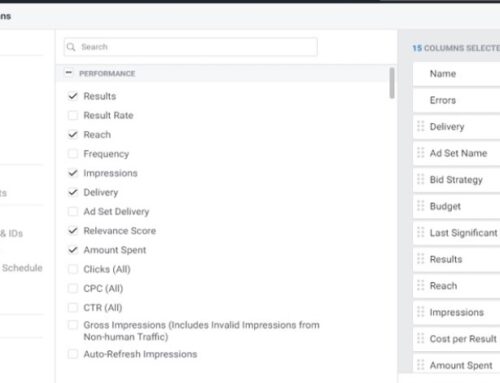Once a gamble, now an exact science.
This is a four-part series blog which goes in-depth with advertising techniques and procedures.
The time has come when advertising becomes a science and not art. In fact, it is even more prevalent now than it was before. Every ad can be compared and judged against the rest, and no guesswork is permitted. Every ad has to be proven by hard numbers and dollars. Every result can be traced back to a cause. Knowing the cause, we know what to avoid and what to keep doing.
Throughout the past century, advertising slowly become one of the safest business ventures. During its infant years of television and newspaper advertising, a lot of advertising money is poured with little to show for. Guesswork is the norm, art and fancy writing is thought to produce results. Measurement wasn’t there to back creativity. So nobody knows whether their advertising is actually producing profits or not. There just wasn’t a way to tell.
Almost 100 years have passed and now every course is charted, through conversions, tracked results. Every dollar and cent can be accounted for. The cost per reply and sale show up in exactness. The effectiveness of an ad can be traced through the public reaction of the offer. What the offer is, that can be a membership sign-up, usage of coupons, online sale, appointments, leads.
An offer is tied to every advertising campaign, and its effectiveness is judged by the public’s reaction to its offer.
Every part of ad can be compared so to ensure no guesswork is done. Headlines, descriptions, images, copy can be tested to see which one brings out the most public response and action.
Effectiveness of advertising has been based on cost per action and the return on the amount of ad spend. Therefore, everything is tested, everything is known.
Losses can be minimized and disasters avoided through test campaigns. Winning ads can go on to reach stupendous heights.
Advertising developed itself into one of the safest, surest ventures which lead to great returns. A gamble in the past has now become science. And advertising success is no longer an accident, but result of carefully calculated science.
Advertising is salesmanship
All advertising is; salesmanship without a salesman.
Advertising principles should follow closely to that of salesmanship. Because the purpose of an ad is to make sales.
Every ad should justify itself by its cost and result. Treat every ad like your little salesman. He works for your company. Just as you must promote the best salesman in your company, you will also let go the man who does not perform month after month.
Advertising is not just salesmanship, but multiplied salesmanship. The difference is an advertising campaign lies in its ability reach millions while you may need a team of 50,000 trained salesmen to reach the same amount in a month. That may sound good, but advertising lacks the personal touch which is present in a sale when an actual salesman is selling in front of a user.
That being said what constitutes a good advertisement?
An ad should not be used as a medium to show-off but serve the buyer. It should not be used as a way to please the company or the founder’s excessive pride. But to convey information to the user, and create a resistless offer to induce action.
Every allocated advertising space should maximize its value by conveying information to the user, in order to help them make a decision.
Advertising is serious business. Ads are not written to entertain or to receive laughter, but judged solely on its cost and result. Advertising should seek sales not applause. There’s a better place to seek entertainment and amusement.
In writing ads, we should not amuse, or boast, the reader wants to know how you can serve them. And watch out to not show excessive personal pride in your product. That is inside-out thinking. The user wants to know how you can benefit them. This is outside-in thinking. Talking about your own accomplishments does nothing to induce them to take action. Instead, It will likely put them off from taking action.
Testing is a necessity in advertising because guesswork is very expensive. We never know whether a change in headlines can result in 5 or 10 times more actions, so not testing your ads is putting off a lot of potential for your business.
The 2 biggest advertising mistakes is trying to sell people what they do not want. This can be prevented by accurate targeting of the demographic and audience to the business.
But the next is lack of ad salesmanship which is harder to correct.
An advertising man studies the consumer, and tells them what they need to hear to induce a sale. An advertising man takes the side of the consumer, because he knows it is the consumer that decides whether or not the ad is successful.
Attach a resistless offer to the public
Good advertising has a resistless offer, therefore inducing resistless sales. Most ads merely ask the user to buy their brand, offers few reasons why, there are thinking not from the consumer’s point of view but their own selfish desires to make a sale.
Advertising should always seek to serve first and foremost. When advertising is used for personal pride and bragging or to bring down competitors, it does not bring sales but leaves a certain distaste on the consumer.
Advertising is a medium to provide information about your service, and attached to it a resistless offer.
They give wanted information, they cite its benefits, they offer a sample, perhaps a trial use of their services. Money-back guarantee to induce trust. Whatever the offer is, make it easy for the customer to take action.
Instead of shouting “BUY NOW!”, “BUY FROM ME AND NOT THE REST.”,”WE ARE THE BEST.”. These are examples of poor salesmanship in advertising, and is usually the result of selfish appeal to oneself.
Selfish appeals cannot and will not bring customers to the door, at least not for the long term. An advertisement must first seek to serve, and serve more and better than the rest. In quantity and in quality. Attach the ad with an irresistible offer to induce the public to take action on.
A simple way to achieve this is through a trial or a test of its product for no cost on the consumer. The advertiser absorbs the risk and let the user have the benefits of using their product for no cost before committing their hard-earned money.
When advertising principles are closely followed, a company has greater chance of achieving success not only in online advertising, but any form of advertising.





